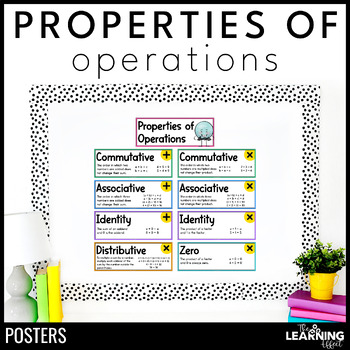Properties of Operations Posters | Properties of Numbers Math Anchor Charts
- PDF
What educators are saying
Description
Add these brightly colored posters of Properties of Operations to your math curriculum. These posters include the following properties for addition and multiplication: commutative, associative, distributive, identity, and zero.
The posters have two options - half page size for separating addition and multiplication and full page size that includes both operations together. You get both color and black and white versions of each set.
THIS RESOURCE INCLUDES
- Header posters
- Properties of Operations
- Properties of Numbers
- Posters for each property - in color + black/white
- Commutative
- Associative
- Distributive
- Identity
- Zero
- Student reference half-page sheets – 3 options
- Addition Properties only
- Multiplication Properties only
- Addition + Multiplication Properties together
INCLUDED FILE FORMAT
- PDF: This resource requires Adobe Reader (free software). The contents may not show correctly if using other PDF software.
PLEASE NOTE
⚠️ The PDF is NOT editable in any way, and you will not be able to manipulate the content inside.
Basic Operations Resources
- Math Fact Fluency Addition, Subtraction, Multiplication, & Division Timed Test BUNDLE
- Long Division Posters
CLICK HERE to follow The Learning Effect and be the first to know when NEW resources are added to my store!
New resources are always discounted for the first 48 hours.
CONNECT WITH ME
The Learning Effect Blog • Instagram • Facebook • Email Sign Up
Please ask ALL questions before purchasing.
© The Learning Effect, LLC | Tiffany Schmidt
All rights reserved by author.
Permission to copy for single classroom use only.
Please purchase additional licenses at a discounted rate for additional users.
Intended for classroom and personal use only.





